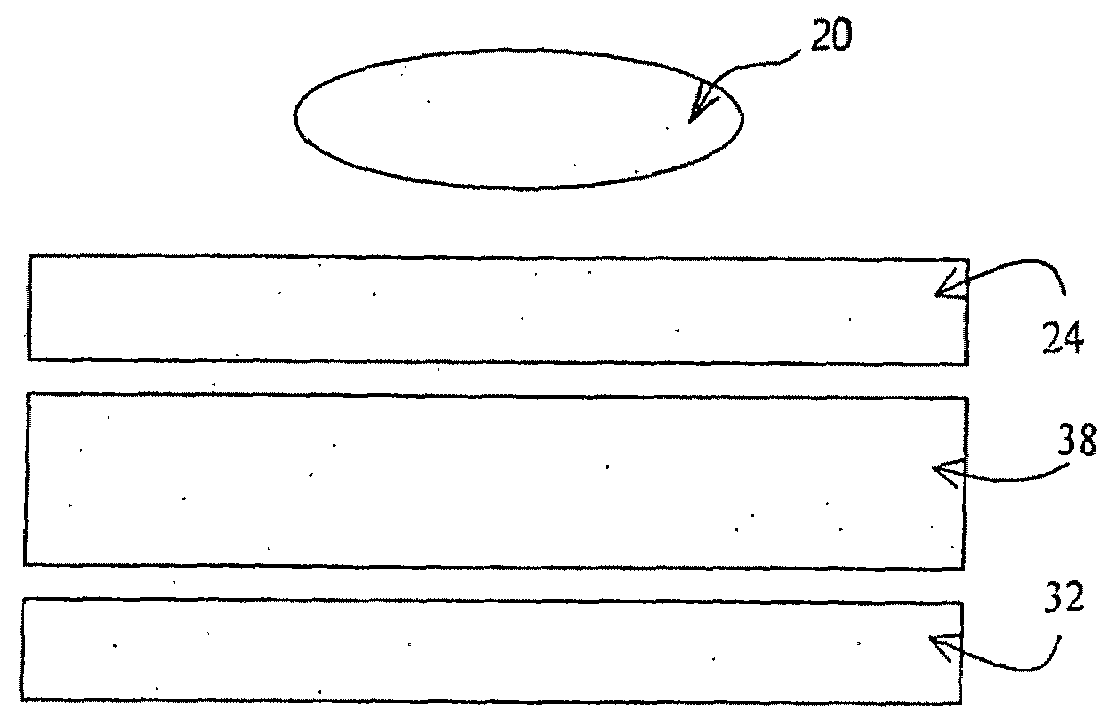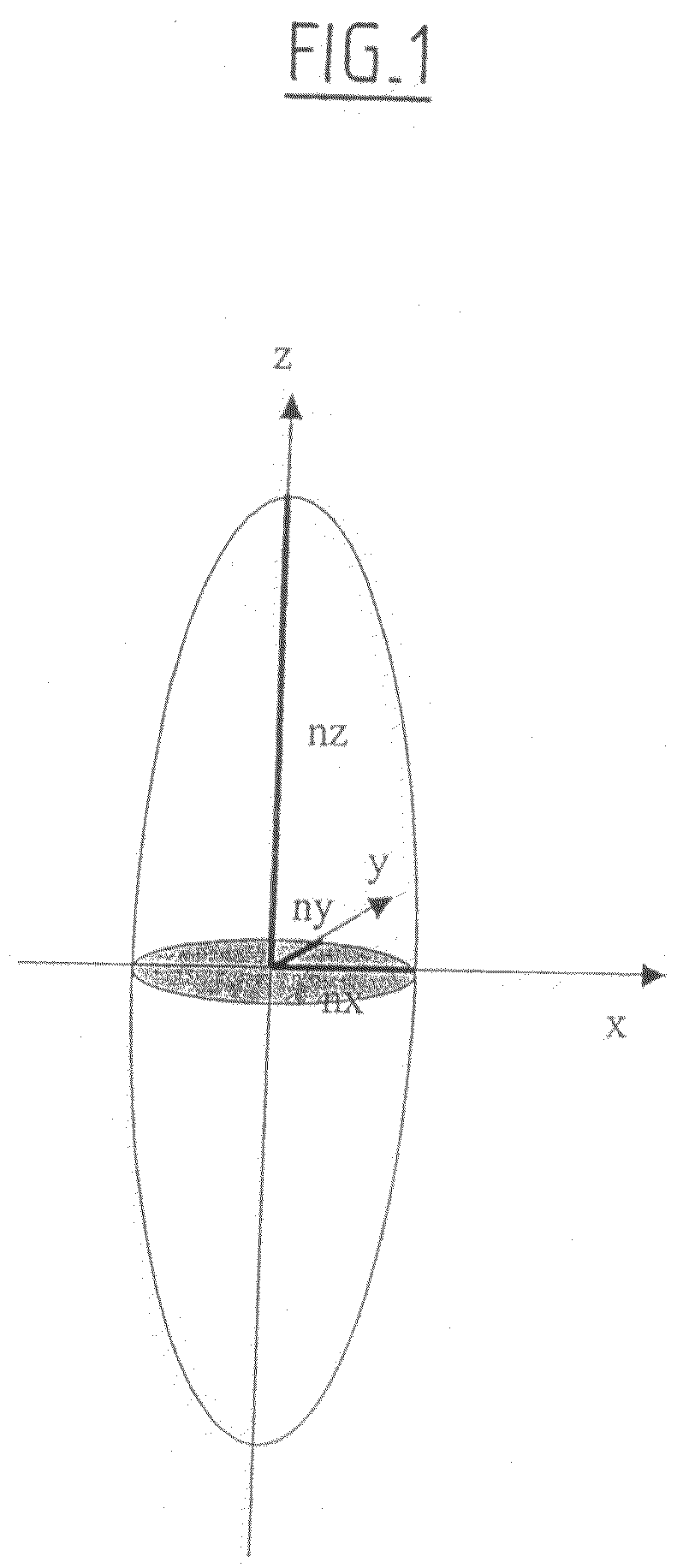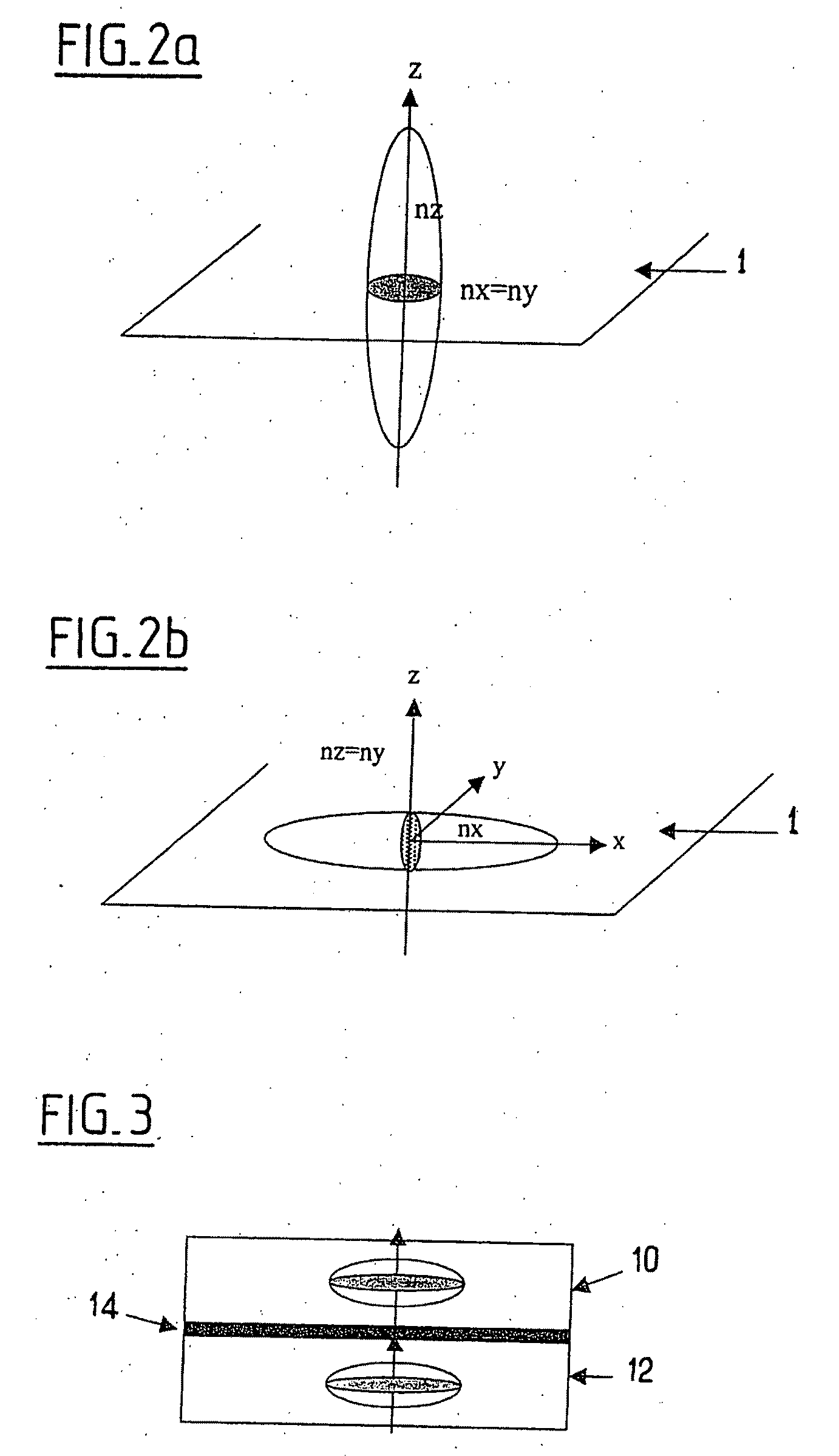Single-polarizer reflective bistable twisted nematic (btn) liquid crystal display device
a liquid crystal display device and single-polarizer technology, applied in non-linear optics, instruments, optics, etc., can solve the problems that the birefringent compensation layer developed to improve the contrast ratio and reduce the color shift at oblique viewing angles of tn displays is not suitable for use with btn displays, and achieves the effect of improving the optical performance of single-polarizer
- Summary
- Abstract
- Description
- Claims
- Application Information
AI Technical Summary
Benefits of technology
Problems solved by technology
Method used
Image
Examples
example 1
C+ Compensation Layer Between Polarizer with No TAC Substrate and πBTN Liquid Crystal Layer
[0114]For this example the polarizer has no birefringent TAC substrate. This example could correspond to any of the embodiments described in connection with FIGS. 16-18 but is particularly suited for the embodiment of FIG. 17 where the polarizer and compensation layer are located between the transparent substrate 120 and the πBTN liquid crystal layer 150. If the polarizer were deposited by a coating process, for example, a TAC substrate layer would not be present. For this configuration, the polarizer can be oriented either at −41.3° or at 48.7°. The optical performance of these two configurations are simulated, finding an optimum value for the C+ compensator, and the results are given in the table 6 where it is seen that configuration #1 gives a slightly wider viewing cone and slightly less color shift. The stack corresponding to configuration #1 is explicitly presented in table 7.
TABLE 6the ...
example 2
C+ Compensation Layer Between Polarizer with TAC Substrate and πBTN Liquid Crystal Layer
[0117]For this configuration a birefringent TAC layer has been added to the polarizer. As before, the polarizer can be oriented either at −41.3° or at 48.7°. The optical performance of these two configurations are simulated, finding an optimum value for the C+ compensator, and the results are given in the table 8 where it is seen that configuration #1 gives a slightly wider viewing cone and slightly less color shift. The stack corresponding to configuration #1 is explicitly presented in table 9.
TABLE 8the oblique optical performance of mode 1-1 of the single-polarizer reflective πBTN display with one TAC layer andan optimized positive C retarder between the TAC layerand the πBTN LC layer.Config.TACPositive CNo.P angle(nz − no) · d(nz − no) · dΔCmaxθmax#1−41.3−55 nm120 nm0.461°#2 48.7°−55 nm115 nm0.659°
TABLE 9configuration #1 of πBTN optical compensation with one TACsubstrate and an optimized pos...
example 3
Polarizer with TAC Substrate and C+ Compensation Layer Between πBTN Liquid Crystal Layer and the Reflector
[0120]In this example the compensator is located on the other side of the πBTN layer between the πBTN layer and the reflector. This example could take the form of the embodiments described in connection with FIG. 19. For this configuration, the polarizer can be oriented either at −41.3° or at 48.7°. The optical performance of these two configurations are simulated, finding an optimum value for the C+ compensator, and the results are given in the table 10 where it is seen that configuration #2 gives slightly larger θmax and slightly less maximum color shift ΔCmax. The stack corresponding to configuration #2 is explicitly presented in table 11.
TABLE 10the oblique optical performance of mode 1-1 of the single-polarizer reflective πBTN display with one TAC layer andan optimized C+ retarder between the πBTN liquidcrystal layer and the reflector.Config.TACPositive CNo.P angle(nz − no)...
PUM
| Property | Measurement | Unit |
|---|---|---|
| angle | aaaaa | aaaaa |
| angle | aaaaa | aaaaa |
| twist angle | aaaaa | aaaaa |
Abstract
Description
Claims
Application Information
 Login to View More
Login to View More - R&D
- Intellectual Property
- Life Sciences
- Materials
- Tech Scout
- Unparalleled Data Quality
- Higher Quality Content
- 60% Fewer Hallucinations
Browse by: Latest US Patents, China's latest patents, Technical Efficacy Thesaurus, Application Domain, Technology Topic, Popular Technical Reports.
© 2025 PatSnap. All rights reserved.Legal|Privacy policy|Modern Slavery Act Transparency Statement|Sitemap|About US| Contact US: help@patsnap.com



